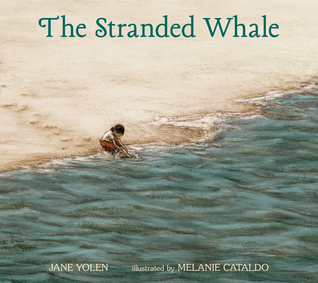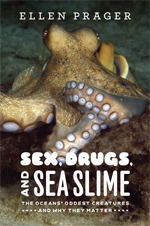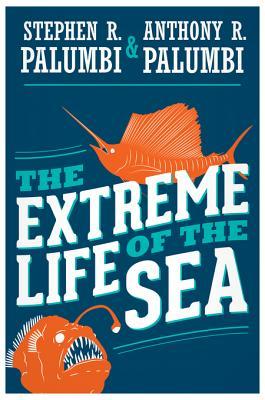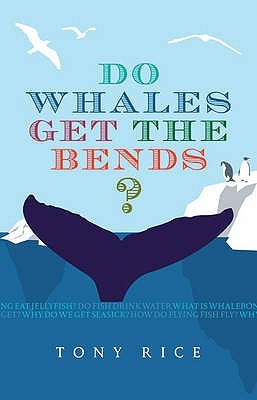 I’ve been absolutely hooked by underwater sea creatures as of late*, ranging from molluscs bearing their beautiful shells to the octopuses, as pictured on the cover above (except that’s actually not very wide a range at all: octopuses/octopodes are molluscs – they’ve simply lost their shells a while back). The sea slugs and snails are also quite a sight, with an amazing range of patterns that adorn their bodies, and an equally wide range of roles they play in the ocean. And then the ROM Blue Whale exhibit pops up (which Lily blogged about previously). Followed by The Stranded Whale popping up in my periphery while I was looking for some picture books on death (of which Duck, Death and the Tulip was a part). I think the universe is telling me something. So I dove into reading about marine creatures (I have yet to surface, actually). Instead of posting a disproportionate number of reviews of books about oceanic dwellers, I figured it would make more sense (and be easier to follow) if I were to organize it into a series, so look out for more Dive into Reading posts!
I’ve been absolutely hooked by underwater sea creatures as of late*, ranging from molluscs bearing their beautiful shells to the octopuses, as pictured on the cover above (except that’s actually not very wide a range at all: octopuses/octopodes are molluscs – they’ve simply lost their shells a while back). The sea slugs and snails are also quite a sight, with an amazing range of patterns that adorn their bodies, and an equally wide range of roles they play in the ocean. And then the ROM Blue Whale exhibit pops up (which Lily blogged about previously). Followed by The Stranded Whale popping up in my periphery while I was looking for some picture books on death (of which Duck, Death and the Tulip was a part). I think the universe is telling me something. So I dove into reading about marine creatures (I have yet to surface, actually). Instead of posting a disproportionate number of reviews of books about oceanic dwellers, I figured it would make more sense (and be easier to follow) if I were to organize it into a series, so look out for more Dive into Reading posts!
I’ll be starting off with these three, which are more general books about ocean life, before moving onto other topics (see way down below, after the cut, for a list of what’s the come):
- Do Whales Get the Bends? by Tony Rice
- Sex, Drugs and Sea Slime by Ellen Prager
- The Extreme Life of the Sea by Stephen R. Palumbi & Anthony R. Palumbi
Also, just a quick note so everyone knows where I’m coming from and how that affects my reading of these (and following posts about the oceans and their inhabitants): I’ve read at least a good handful of books in this area, and by the time you read 3-4 books that focus either generally (as below) or otherwise (as I will cover later) on ocean life, you’ll notice some repetition and similarities in both the method of organization as well as the content covered. If you’ve never delved into this topic before, don’t let my comments about some of these titles not being in-depth enough for myself stop you! I have learned something new with each of these titles, so here’s to hoping you will, too!
Don’t let the title fool you: this is not just about whales and decompression sickness (National Geographic article if that’s literally the only thing you’re interested in, which takes as one of its main sources this Journal of Experimental Biology article, which is free to access). Rice answers practically all of the questions you might have about the oceans, its inhabitants, as well as our relationship with those inhabitants (and if he doesn’t answer all of them, he at least covers 118 of them! I’d say that’s quite a bit of ground). Ever wonder why the oceans are blue? (Same reason the skies are. Same reason anything’s blue, to be honest. More on light & colour here.) But why do icebergs float? What does the oceanscape even look like? We can imagine what landscapes look like, but waterscapes can be a bit difficult to wrap our heads around. And if you’ve forgotten ever learning about the Coriolis force/effect (which is not actually a force per se), for one I don’t blame you because I only vaguely remembered having read something to do with it during my K-12 school years after reading Rice’s explanation, and for two, Rice will tell you all about it in easy to understand terms so even if you’ve never been a science kid (hello, world!), you’ll find it easy to follow.
And as your next read, if your interests tend more towards stuff to do with water (or what to do if you’re out on water), here’s something you might like: How to Read Water by Tristan Gooley.
 Fact is way weirder – and slimier – than fiction, as you’re about to find out. I’ll admit it: I picked it up primarily because of the title. It’s weird and it’s catchy, which meant the book had high expectations to live up to. And it certainly does (to an extent)! I’ll start off with what Prager does a great job of first:
Fact is way weirder – and slimier – than fiction, as you’re about to find out. I’ll admit it: I picked it up primarily because of the title. It’s weird and it’s catchy, which meant the book had high expectations to live up to. And it certainly does (to an extent)! I’ll start off with what Prager does a great job of first:
1) Terms and definitions right from the start. I wish I could say this is routine procedure, but it really isn’t always, so this was great to see. In so doing, Prager doesn’t give off the impression that the material covered will be too technical or difficult for the average reader, and makes it obvious that she is keeping in mind her target audience, which is presumably not necessarily from the scientific community.
2) Organization. Each chapter covers a different topic, and Prager dutifully details the sex lives of oceanic critters, the drugs they produce, and the copious amounts of slime that fill the oceans. She also includes different subsections for each chapter so it’s easy to settle into a rhythm reading each chapter, and you won’t be lost if you have the set the book down at any time.
3) Breadth. Prager takes you through a wide variety of animals and tells you about some of their most interesting characteristics. If you never knew what a hagfish was or looked like, or how they feed, you’ll regret ever picking this up because they are terrifying and you’ll wish you could have remained ignorant till the end of your days (hopefully not ended by a hagfish – I wouldn’t wish that on anyone). Every time you step into the ocean without a wet- or drysuit, you will remember what Prager once wrote about hagfish and rethink your life choices. Then there are cone snails (which generate some of the most complex toxins we know of), penguins (ever look down one of those throats?), killer whale teamwork (I will be talking more about cetaceans in another post, but for now, if that’s where your interests are at, I would highly recommend The Cultural Lives of Whales and Dolphins by Hal Whitehead & Luke Rendell, as I am currently head over heels for it!), polar bears, sharks, and more!
So why am I not giving this my full stamp of approval? It’s really down to personal preference: I don’t like the style of writing. #2 up there also makes it into a bit of a con for myself personally, because it’s so rigidly structured it’s almost like a mini-textbook (except it’s less thorough than I would expect from a textbook proper). I had also read about octopodes and squids prior to this, along with Venomous, so I already knew about the cone snails and that octopuses grow senescent after sex. And while killer whale teamwork is mind-boggling and absolutely fascinating, if that’s what I wanted to learn more about, The Cultural Lives of Whales and Dolphins covers much more ground and in much more detail. I did enjoy – maybe not… enjoy – discovering the hagfish’s prodigious slime-producing abilities and their less than savoury preferences as to how to eat, and there’s definitely tons of slime and weird sex (but put into perspective, it seems much less weird), but these don’t seem to be the focus the further along you move into the book, and mentions of the three titular topics become perfunctory at best as we move along. All this to say: I wouldn’t read it again. But if this were the very first book I ever picked up regarding oceanic critters, I would still have been so down to read more!
To sum up: great book for those of you wanting to wade into the waters of learning about ocean life! It’s also clearly and simply written enough for both children and adults alike, and as I said above, Prager defines her terms so that anyone without a background in science (or anyone who has forgotten all the science they may have learned earlier in school) can still wade through her book without trouble and be ever more prepared for the next aquatic book.
 Now, this is the first book I read that actually addressed the formulaic approach to aquatic life book writing in its preface or introduction, which got me reasonably excited about the rest of it… except it does the same thing later on down the line! Which I mean, fair – it’s pretty hard to avoid – but also.
Now, this is the first book I read that actually addressed the formulaic approach to aquatic life book writing in its preface or introduction, which got me reasonably excited about the rest of it… except it does the same thing later on down the line! Which I mean, fair – it’s pretty hard to avoid – but also.
Moving on.
This father-son Palumbi duo has decided to mix elements of fiction into their writing, with mixed results. In their defense, they do state outright that they will be doing so and why. And to an extent, I generally expect a degree of fictionalization to happen whenever authors detail what happens down in the depths of the sea – not just in this book – unless it’s otherwise stated as an observation. In that sense, I don’t really think of it as a huge departure from the norm. Before I start giving my two cents (or maybe two nickels, now that pennies are defunct?) about that, I’m going to talk a bit about what I learned from this slim volume that I didn’t see in quite as much detail elsewhere: an explanation as to what motivates flying fish, dolphins, and whales to jump out of the water, or breach. And they cover it in a bit more detail than I would have expected, given the rest of the book. (Not that that’s a bad thing, as this is an introduction to the subject.)
Now, onto the fictional aspects of it. It does undermine the authority of the authors somewhat when you’re made to question which part is how much fiction and which part is how much fact – it is pretty obvious in some parts, as when Palumbi & Palumbi describe the sperm whale hunting down its giant squid prey** – which is a bit problematic, considering this book seems like it’s targeted at those who are just starting to wade into the waters. Part of me wants to say to the authors to only add fictional elements where it would enhance understanding, which I am of the opinion the Sperm Whale v. Giant Squid episode doesn’t really do, as it perpetuates a view of the relationship between these two creatures that is already widespread and perhaps should be questioned, but another part of me thinks it’s a good approach to generate interest: if readers get into this topic, they’ll read up more and discover new information or revise their understanding of what happens below the waves***. For all my grouching though, as an introduction to life under the sea, I would say this is an accessible read, with lots of interesting information presented in a fun and casual way.
So much for this installment. I’ve got another batch of general reading that will be coming up, but they’re a different sort. Hopefully it’ll be clear when I get around to posting them why I separated it into two posts (aside from the obvious issue of this post getting really long), but they are a different… type of book. Besides, I still haven’t read them yet, which would make reviewing them a bit difficult.
Next up:
- Dive Into Reading: General Reading
- Spineless
- Cetaceans
- Mollusca
- General Ocean Reading
*By their hooks & rasps, perhaps?
**I’ll hopefully remember to discuss this a little further down the line, because this portrayal of events is up for debate. How epic the battle is, or how one-sided, appears to be a matter of a bit of discussion.
***Of course, there is still the issue of this slackness becoming the norm, which would make it so that any further reading might also produce questionable information. But as that is not the topic of discussion here, I’m going to leave it at that.
